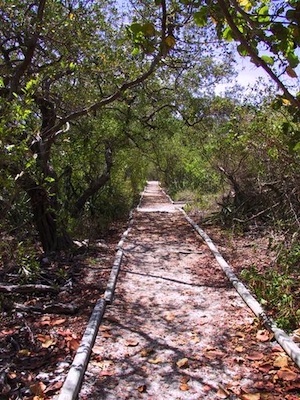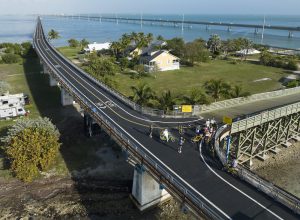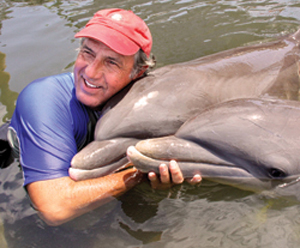During the Florida Keys’ colorful two-century history, the island chain at the southern tip of Florida has been shaped by individualists, visionaries, shipwreck salvagers and environmentalists. Today visitors can explore scores of spots in the Upper and Middle Keys that recall their presence and showcase the region’s rich heritage.

A small island accessible only by kayak, Indian Key was developed by wrecker John Jacob Housman in the early 1800s.
For example, Key Largo is the site of the United States’ first undersea park, named for newspaperman and conservationist John Pennekamp. Dedicated in 1960, John Pennekamp Coral Reef State Park can be found at mile marker 102.5. Covering 70 nautical square miles, it’s famed for glass-bottom boat and snorkel tours of the Florida Keys’ coral reef and dive and snorkel tours to the Christ of the Deep statue.
Nearby at mile marker 104 is a favorite site for movie buffs: the Caribbean Club Bar, a lively waterfront spot established in 1938 that was one of the locations for the 1948 Humphrey Bogart film classic “Key Largo.”
Echoes of the Keys’ “wrecking” or shipwreck salvage heyday infuse Indian Key Historic State Park, a small island off mile marker 78.5 in Islamorada. Currently accessible only by kayak, it was developed by wrecker John Jacob Housman in the early 1800s. Once the Keys’ second-largest community, in 1840 its buildings were burned to the ground during a Seminole Indian raid. The remains offer haunting hints of the past.
Dolphins have long been part of the island chain’s natural world. Dolphin Research Center, at mile marker 59 on Grassy Key, dates from the 1940s when fisherman Milton Santini brought dolphins to his property. His favorite, named Mitzi, later starred (with other dolphins) in the early 1960s film “Flipper.”
In 1984 Jayne Shannon Rodriguez and Armando “Mandy” Rodriguez took on the facility and founded the nonprofit Dolphin Research Center. Providing forever homes for rehabilitated animals, it’s renowned for pioneering dolphin research and educational programs that inspire marine mammal conservation. DRC attracts visitors from around the world to see and learn about its family of dolphins and sea lions.
In Marathon, Crane Point Hammock Museum & Nature Trail is among the Keys’ most important archaeological sites. The 63.5-acre tract at mile marker 50.5 contains evidence of prehistoric Indian artifacts and was the site of an early Bahamian village. Its Adderley House, a classic Bahamian-style home built in 1904, is the oldest Keys house outside Key West. The must-explore spot also features a museum, lagoon, plant nursery and several nature trails.
It’s a “bucket list” experience to drive across the Seven Mile Bridge, one of the world’s longest segmental bridges and the centerpiece of the iconic Florida Keys Overseas Highway. The majestic span, stretching above the Atlantic Ocean and Gulf of Mexico, connects Marathon to the Lower Keys.

Bicyclists stop at the southwest end of the Old Seven Mile Bridge near Marathon, after pedaling along the restored 2.2-mile section of the bridge leading to historic Pigeon Key. (Photo by Andy Newman, Florida Keys News Bureau)
Paralleling it is the Old Seven Mile Bridge, part of the Florida Keys Over-Sea Railroad that was conceived by visionary Henry Flagler and completed in 1912. Called the eighth wonder of the world, the railroad connected the Keys with each other and mainland Florida for the first time.
Beneath the old bridge at mile marker 44.8 lies the tiny island of Pigeon Key, a former work camp for laborers constructing the bridge. Now featuring restored buildings and a museum, Pigeon Key offers visitors a journey back in time. It’s accessible by tram or by walking or bicycling a refurbished section of the Old Seven Mile Bridge.
Want to know more about the Florida Keys and their compelling 200-year history? Start your exploration here.


